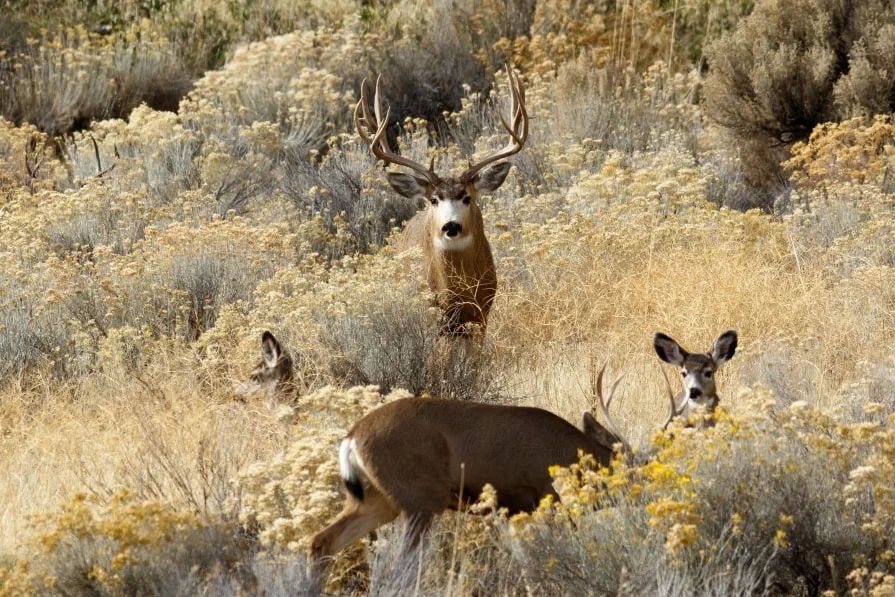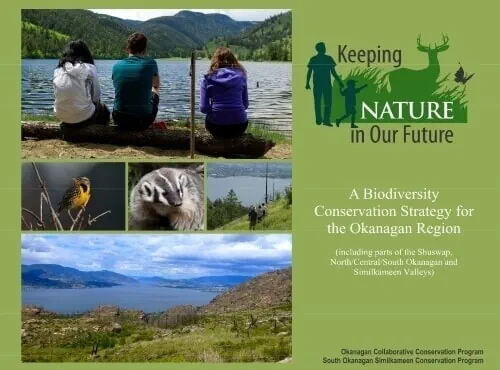In the Okanagan Valley, we are facing our final opportunity to maintain a network of low elevation ecosystems. The fast rate of development in the Okanagan is steadily reducing and fragmenting the low elevation areas thereby cutting off the remaining pathways for wildlife movement.
In response, this project brought together local and provincial governments, conservation organizations, industry, and Okanagan Nation Alliance to identify and implement actions to protect a major ecological wildlife corridor in the Central Okanagan. The resulting 65km by 1km corridor runs from Okanagan Mountain Provincial Park to Kalamalka Lake Provincial Park.
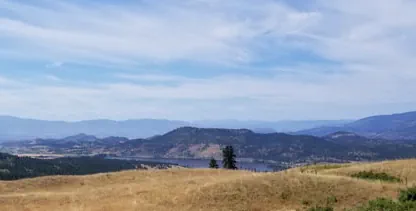
In 2022, the OCCP completed 10 workshops that were facilitated by Ecoscape Environmental Consulting and the OCCP and included 52 individuals representing 30 organizations. The workshops focused on six major topics: land securement, land use planning, stewardship, education/outreach and restoration, nature friendly agriculture, and research needs for corridor planning. The participants provided their knowledge and insights into actions and strategies, identified gaps in information and research for the protection and conservation of the lands in and surrounding the corridor.
A cultural researcher from the Okanagan Nation Alliance also conducted nine interviews with hunters and community members of Westbank First Nation and Okanagan Indian Band to gain a better understanding of the movement of wildlife and areas for gathering plants and medicines along the corridor. The information gathered was drawn from personal experience and was place based and provided important information on the changes that have taken place on the land over thousands of years and have been passed down from generation to generation.
The information from the workshops and interviews are being developed into a Habitat Connectivity Action Plan that will provide a set of 20 actions to connect and protect wildlife, habitats, and all living things (biodiversity) between Okanagan Mountain and Kalamalka Lake provincial parks. The actions will ensure that wildlife can migrate and disperse with the changing seasons, safeguard genetic flow between populations, boosts biodiversity and resilience in degraded ecosystems, increase food security, and ensure species are better able to adapt to our changing climate. The Action Plan ill be released in the spring of 2023.
The project supports and expands upon the Regional District of the Central Okanagan (RDCO) initiative to plan for ecosystem connectivity in the Central Okanagan, which is detailed in the "Planning for Ecosystem Connectivity Workshop Report" [PDF]. It also connects with two cross-border ecological corridor projects: the Yellowstone to Yukon Conservation Initiative and the Sagelands Heritage Program by Conservation Northwest.
About Ecosystem Connectivity
Ecosystem connectivity describes the interconnected network of habitat patches and migration corridors that species require to survive.
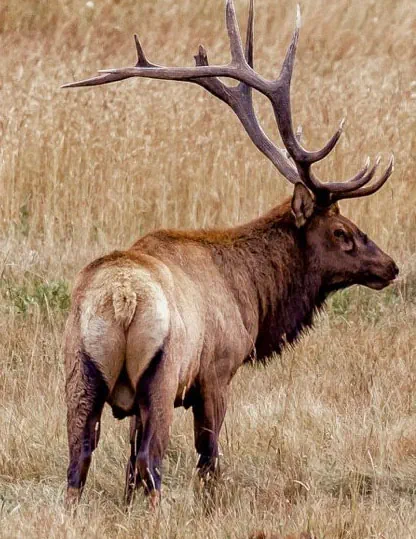
Maintaining ecosystem connectivity is essential for species survival. It allows the required space for activities such as:
- species migration
- hunting and foraging
- finding shelter
- access to larger breeding populations with more genetic diversity
Utilizing sensitive areas for ecological connectivity also allows for areas to protect species at risk and reduce wildlife conflicts. Furthermore, ecosystem connectivity supports ecosystem functions which, in turn, support essential food, air, and water systems for nearby human populations.
Connectivity also provides the additional benefit of moderating impacts of climate change by:
- reducing groundwater evaporation and soil loss
- providing flood control areas
- providing a natural buffer for wildfires
The building blocks of a connectivity strategy include ecosystem patches linked by connective elements, such as landscape and linear corridors. Buffer zones to limit impacts of adjacent land use may also be added.
Where corridors are not possible, effective connectivity for some species can sometimes be achieved by small ecosystem patches (steppingstone corridors).
Process
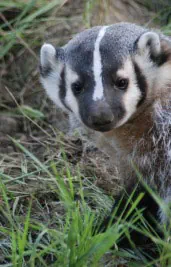
Working with RDCO and UBCO, likely paths for primary wildlife movement through the Okanagan region were identified via digital mapping and modeling. This allowed the identification of ecosystem corridors which, if conserved or restored, would contribute to maintaining ecosystem connectivity in the Central Okanagan.
Next, an Action Team was assembled to develop specific guidelines and recommendations for protecting ecosystem connectivity. This group utilized existing mapping, resources, and expertise, and assembled it into a 5-year Action Plan to implement the corridor's long-term preservation.
A primary corridor, 65km long by 1km wide, between Okanagan Mountain Provincial Park and Kalamalka Lake Provincial Park, was identified and is functioning as the pilot corridor for establishing a 5-year Action Plan.
The Action Plan works with groups of industry experts, government, and scientists to provide recommendations for working with and informing landowners, government planners and decision-makers, First Nations, and NGOs on the necessary steps and guidelines for corridor preservation.
The Action Plan developed for this project will serve as a template for other corridors to be established across public and private lands in the RDCO and adjoining areas.
Timeline
- Plans and guidelines for corridors and ecosystem connectivity were written into the “Designing and Implementing Ecosystem Connectivity in the Okanagan" document.
-
Working with RDCO and Dr Lael Parrott and a graduate team from UBCO, likely paths for primary wildlife movement through the Okanagan region were identified via digital mapping and modeling.
Later, the maps were reviewed by an Advisory Committee of government and NGO volunteers at a workshop hosted by RDCO and OCCP.
Input from the Advisory Committee included:
- identifying perceived opportunities and barriers for the proposed corridors
- prioritizing corridors for protection
- providing additional resources and advice on implementation and policy
- The District of Lake Country agrees to support the preservation of the wildlife corridor.
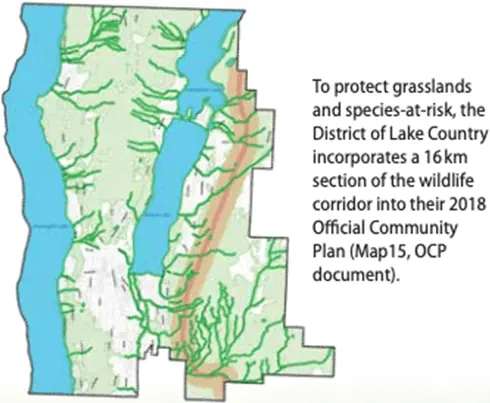
Source: District of Lake Country Official Community Plan -
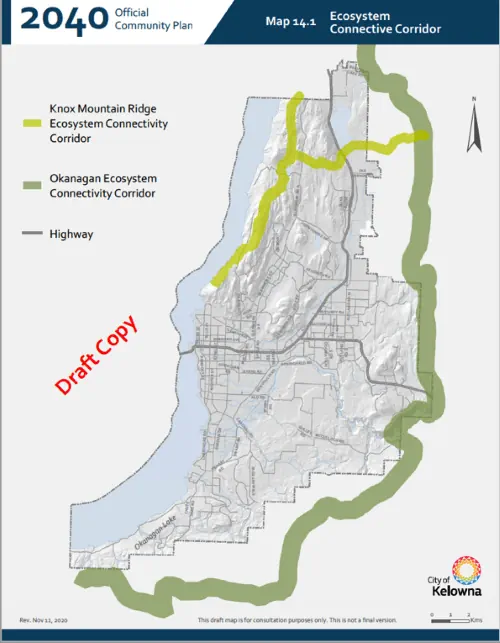
Source: City of Kelowna Official Community Plan A 20-person advisory team was established to develop land use guidelines and stewardship activities for protecting the corridor across public and private lands.
The District of Lake Country officially includes policies to protect a 16km stretch of the wildlife corridor in their Official Community Plan (2018-2038).
Land use guidelines and mapping of the main corridor were incorporated in the draft City of Kelowna 2040 Official Community Plan. An additional secondary corridor connecting Knox Mountain to the main corridor through Glenmore highlands was also included in the OCP.
The City of Kelowna 2040 OCP included policies and guidelines that aim to protect long-term ecological connectivity and the integrity of the parks crossed by the main and secondary ecological corridors.
-
Funding is secured to hire Ecoscape Environmental Consulting to assemble a 5-Year Action Plan. This plan will work with key stakeholders and advisors to direct a successful corridor protection plan.
These workgroups are an Advisory Committee; Okanagan Nation Alliance (ONA); Land Securement; Land Use Planning; Stewardship, Restoration, and Education/Outreach; Agriculture; and Research. These groups are sharing insights into possible issues and barriers for effectively maintaining the wildlife corridor long term, possible worries of the general public so they can be addressed early on in the process, and providing the opportunity to have effective collaboration with the groups once the corridor protection is implemented.
The Action Plan will contain specific actions related to land use planning, policies, stewardship activities, land securement, education, outreach, research, protection, and connection to major regional, provincial and international corridors.
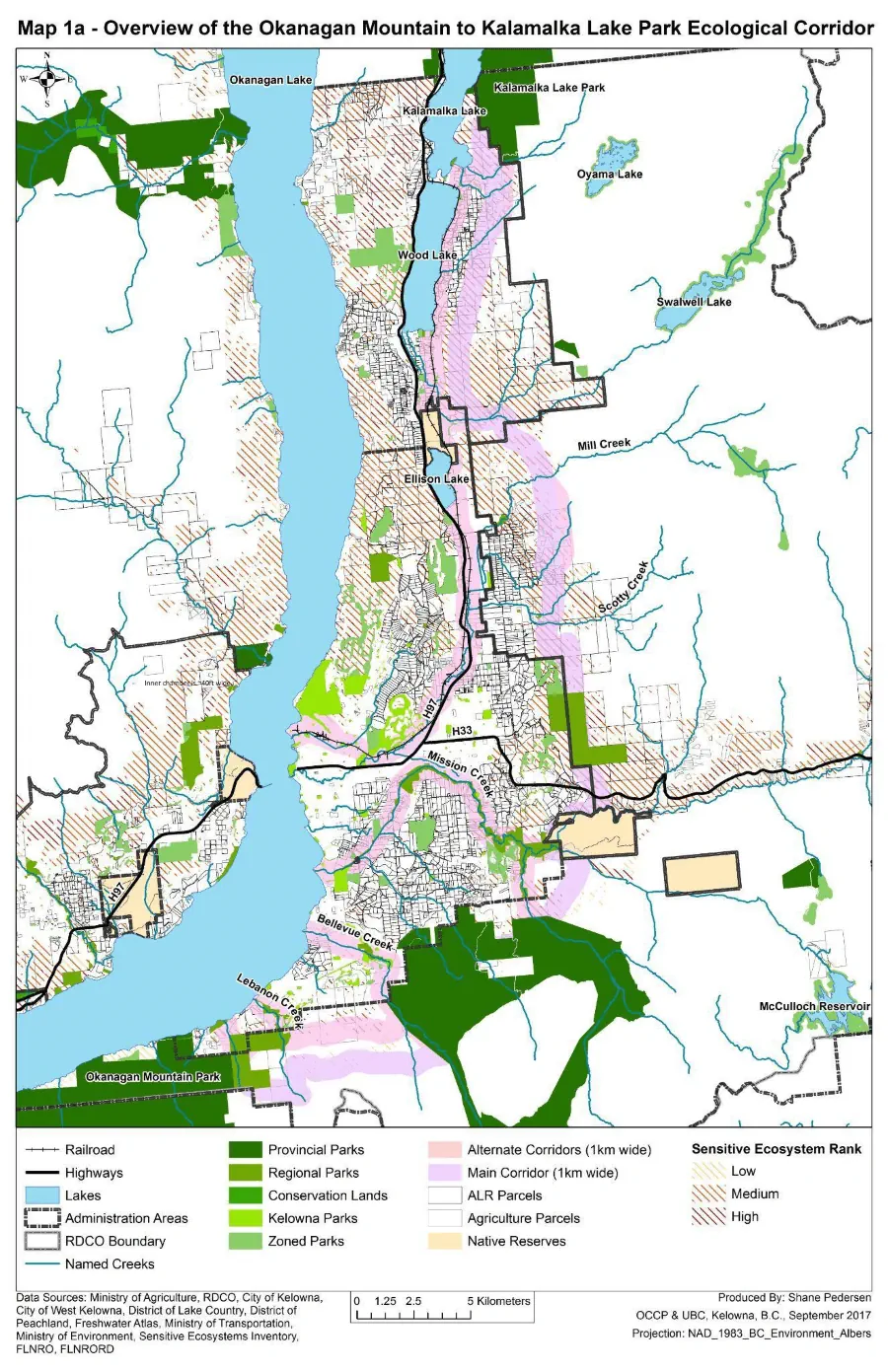
Supporting Documents and Additional Readings
- 404 Document Link, little to no idea what document title is
- Keeping Nature Connected (May 2021) report [4.4MB PDF].
- The Okanagan Mountain to Kalamalka Lake Ecological Corridor

